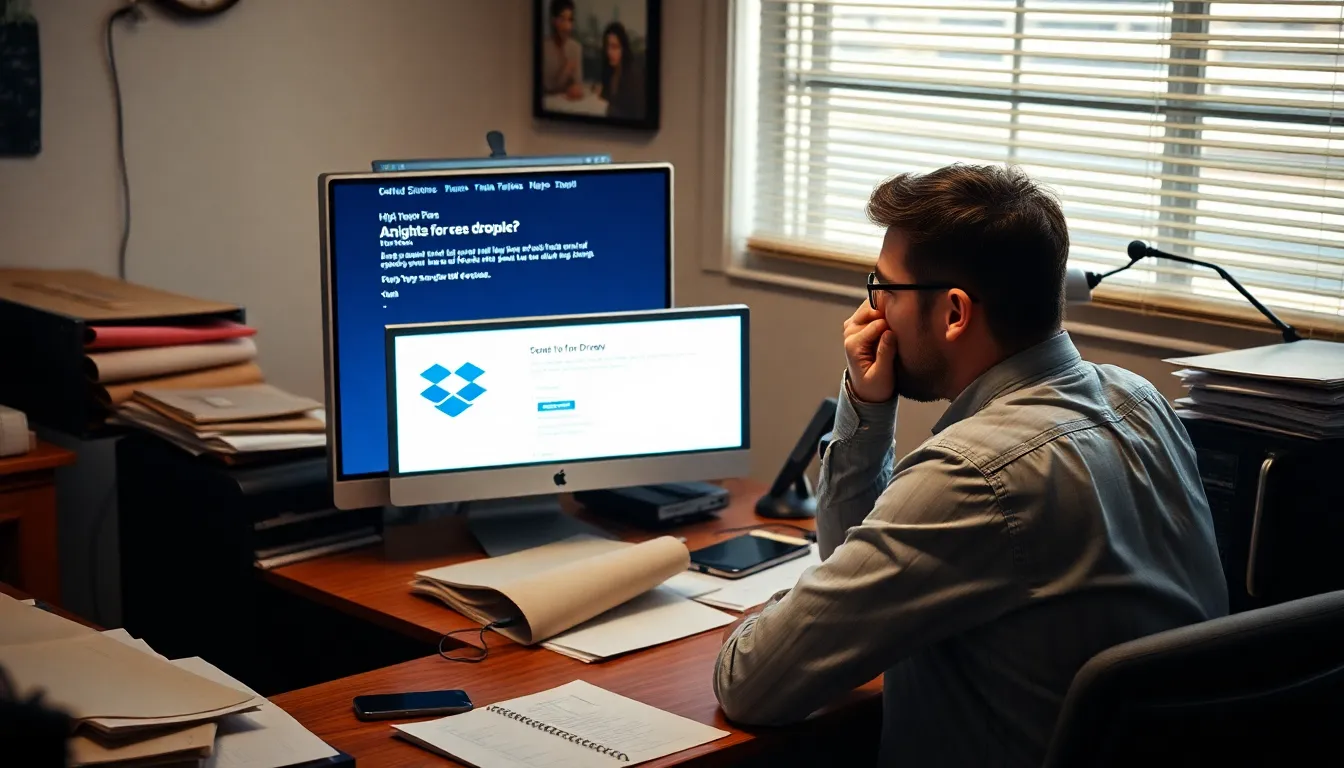In a world where cryptic codes and mysterious messages reign supreme, few things spark curiosity like the message code “dropbox 8737.idj.029.22.” It’s like the secret menu at your favorite café—intriguing and just begging to be decoded. But what does it really mean? Is it a hidden treasure map or just another Tuesday in the digital realm?
Table of Contents
ToggleUnderstanding Message Code Dropbox 8737.idj.029.22
Message code “dropbox 8737.idj.029.22” represents a unique identifier or reference point within a larger digital framework. This code could signify various things, such as data files, user content, or specific actions related to a digital platform like Dropbox.
What Is Message Code Dropbox 8737.idj.029.22?
Message code “dropbox 8737.idj.029.22” specifically denotes a designated reference that transmits particular information. Identifying features may include unique numerical sequences or alphanumeric characters. Users might encounter this code while navigating files or synchronizing data in the Dropbox system. Primary functions often revolve around organizing shared content, maintaining version control, or even tracking user activity related to file access and sharing.
Importance of Message Codes
Message codes hold significant value in digital communication and data management. They streamline data processing, ensuring clarity and efficiency at every step. Such codes enable organizations to catalog information effortlessly and enhance user accessibility. Recognizing the importance of designated codes like “dropbox 8737.idj.029.22” contributes to improved file organization and better collaboration among users. Enhanced retrieval through coded references reduces confusion and leads to a smoother user experience.
Common Issues Related to Message Code Dropbox 8737.idj.029.22

Message code “dropbox 8737.idj.029.22” can present several common issues during use. Users often encounter specific error messages that indicate problems with file access or upload.
Typical Error Messages
Error messages frequently include “File not found,” which indicates missing files associated with the code. Users might also see “Access denied,” signaling a permissions issue. Another common message is “Sync failure,” suggesting problems with data synchronization. Users may experience additional messages related to network issues or server errors, leading to confusion. Recognizing these messages helps users troubleshoot effectively and understand possible underlying problems.
Causes of Errors
Several factors contribute to errors related to message code “dropbox 8737.idj.029.22.” One major cause includes incorrect file paths, where users attempt to access files that no longer exist or have been moved. Permissions settings can also create complications, preventing access to specific files for unauthorized users. Additionally, network instability affects synchronization, causing delays or failures in data transfer. Outdated software versions may lead to compatibility issues, complicating the user’s experience. Understanding these causes can help identify solutions and optimize file management.
Troubleshooting Message Code Dropbox 8737.idj.029.22
Resolving issues with the message code “dropbox 8737.idj.029.22” requires a focused approach on common error messages. Users encounter issues when navigating files, requiring effective troubleshooting.
Step-by-Step Guide to Resolve Issues
- Check File Paths: Verify that the file path provided corresponds to the actual location of the file.
- Review Permissions: Ensure that appropriate permissions are granted for the user trying to access the file.
- Examine Network Connection: Assess the internet connection for stability and speed, addressing any interruptions.
- Update Software: Confirm that Dropbox and related software are running the latest versions to prevent compatibility issues.
- Restart Application: Close and reopen Dropbox to reset its state, potentially resolving temporary glitches.
Additional Tips for Users
Users can manage files better by regularly organizing their folders. Keeping files in clearly named directories enhances accessibility and reduces confusion. Monitoring system updates can prevent many compatibility issues. Users might benefit from reading documentation provided by Dropbox for specific features, enabling a deeper understanding. Collaborating with other users by sharing access may streamline workflows, making it simpler to resolve issues when they arise.
Best Practices for Using Message Codes
When using message codes like “dropbox 8737.idj.029.22,” following best practices ensures optimal performance. Adhering to these guidelines enhances user experience and minimizes errors.
Ensuring System Compatibility
Check device compatibility to reduce issues. Verify that the operating system meets Dropbox’s requirements. Using the latest browser versions also improves functionality. Confirm that hardware specifications align with Dropbox recommendations. Balancing performance with system capabilities prevents obstacles in file management.
Regular Maintenance and Updates
Staying current with software updates enhances overall performance. Apply updates for both the Dropbox application and the operating system regularly. Prioritize routine maintenance checks to identify any potential issues. Running these updates limits software conflicts that may disrupt access. Monitoring these elements consistently ensures a smoother experience when utilizing message codes.
The message code “dropbox 8737.idj.029.22” represents more than just a string of characters; it embodies a vital component of digital communication. Understanding its significance can enhance file management and collaboration efforts. By recognizing common errors and implementing troubleshooting steps, users can navigate challenges more effectively.
Adopting best practices for using message codes ensures a seamless experience in data handling. Staying updated with software and maintaining organized file structures can significantly improve performance. Embracing these strategies allows users to maximize the benefits of platforms like Dropbox, ultimately leading to a more efficient workflow.





